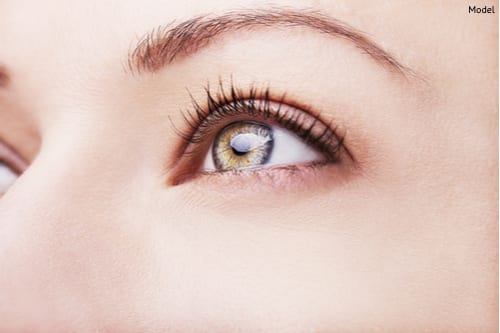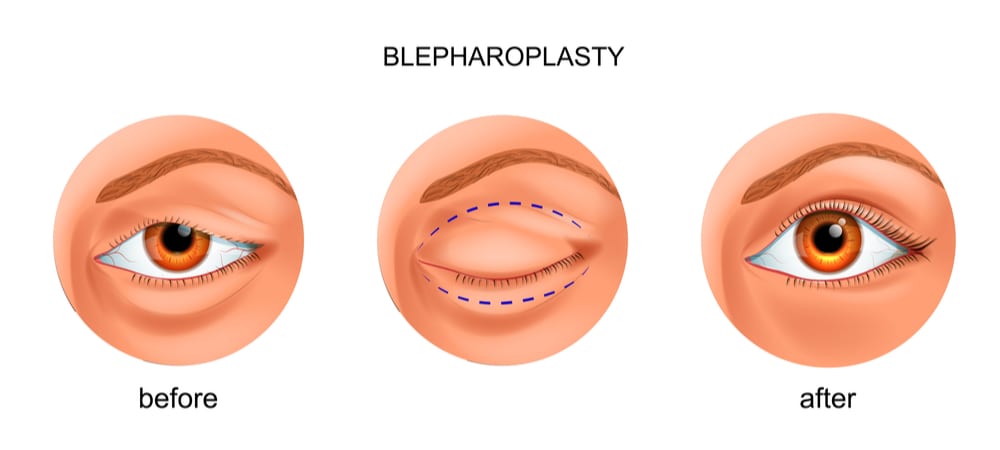Eyelid Surgery | The Office of Dr. Vincent Hung
3 Min Read
Many men and women are interested in restoring a more youthful appearance to their eyes.

The eyes are one of your most prominent facial features, responsible for your ability to express your emotions. Unfortunately, the eyes are also amongst the first to show the visible signs of age as the skin is thin and receives constant strain throughout the day in the way of blinking and facial expressions.
Blepharoplasty is performed on the eyelids to reduce the visible signs of aging above and below the eyes.
The Procedure
Upper Blepharoplasty
Upper blepharoplasty addresses visible signs of aging on the upper eyelid. This can include eyelids that droop down and obstruct the range of vision (which makes everyday activities like driving or reading more difficult) as well as lines and wrinkles around the eyes.
Upper blepharoplasty is performed either under general anesthesia or local anesthesia with sedation. To perform upper blepharoplasty, Dr. Hung will make an incision along the crease of the upper eyelid. By making the incision here, the resulting scar will be invisible when the eyes are open. Pockets of fat in the upper eyelid are either removed or repositioned so that the area will lay flatter. The excess skin that is hooding the eye is trimmed away, and the incision is closed to reveal a smoother and tauter upper eyelid.
This incision can extend past the crease toward the temple for patients who are hoping to reduce the appearance of crow’s feet.

Lower Blepharoplasty
Lower blepharoplasty addresses the bags and dark circles beneath the eye. The incision for lower blepharoplasty runs just below the lower lash line. Excess pockets of fat are removed to reveal a flatter and smoother eye contour, and skin is trimmed and tightened. Once the incision has healed, patients can cover the scar with makeup; all scars will lose their redness and fade with time.
Transconjunctival blepharoplasty is an alternative approach to this procedure. This technique makes an incision on the inside of the lash line (so that there will be no visible scar), and it is through this incision that the fat pockets are removed. This technique is not appropriate for everyone, however, as it can only remove fat and cannot address other cosmetic issues.
Are You A Candidate?
Candidates for blepharoplasty are healthy adults who are interested in improving the appearance of their upper eyelids, their lower eyelids, or both. There is no age limit for this procedure, and many consider it once their aging has become visible to others or sagging skin obstructs their range of vision. Candidates should be non-smokers in good health.
What Can You Expect for Your Recovery?
After undergoing blepharoplasty, most patients experience mild to moderate soreness and tightness of the eyes. The skin around the eyes will bruise and swell, and some patients’ eyes are swollen shut for a short period. Patients should rest comfortably for the first day or two with their head upright at all times, even when sleeping. Keeping your head elevated will promote healing by stimulating blood flow and circulation. Most patients can return to normal activities after one week and more strenuous activities after two or three weeks.
Blepharoplasty will address aesthetic concerns that are present at the time of the procedure. This surgery will not halt the progression of aging, and patients will develop additional lines and wrinkles. However, it is unlikely that the puffiness of the eyes will return, as the pockets of fat are removed. Patients can prolong their results by using a broad-spectrum sunscreen and wearing sunglasses or hats whenever they are outdoors.
If you are interested in learning more about blepharoplasty, or to set up a consultation, contact Dr. Hung by calling (626) 432-5032 or by filling out our online contact form.
